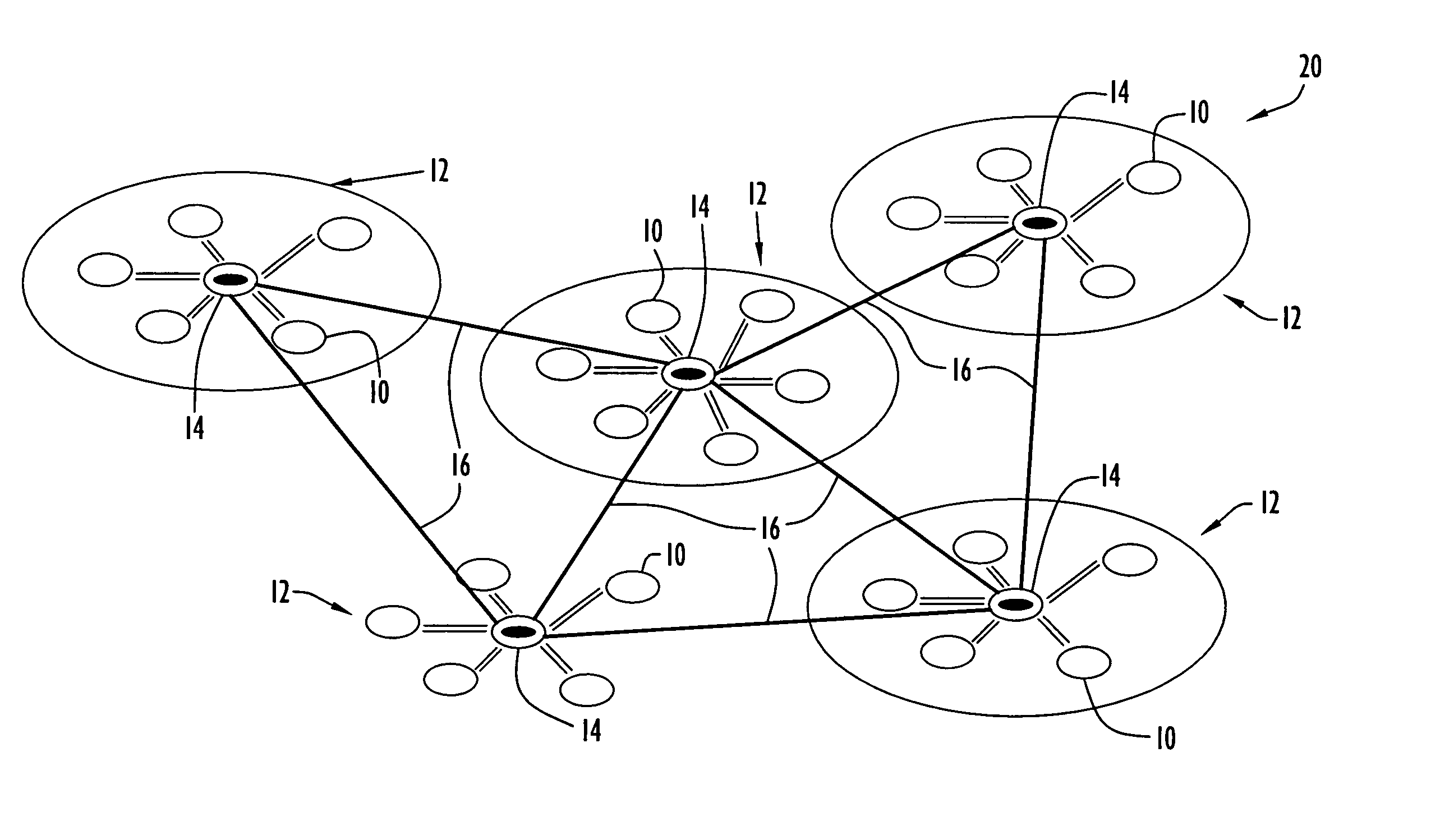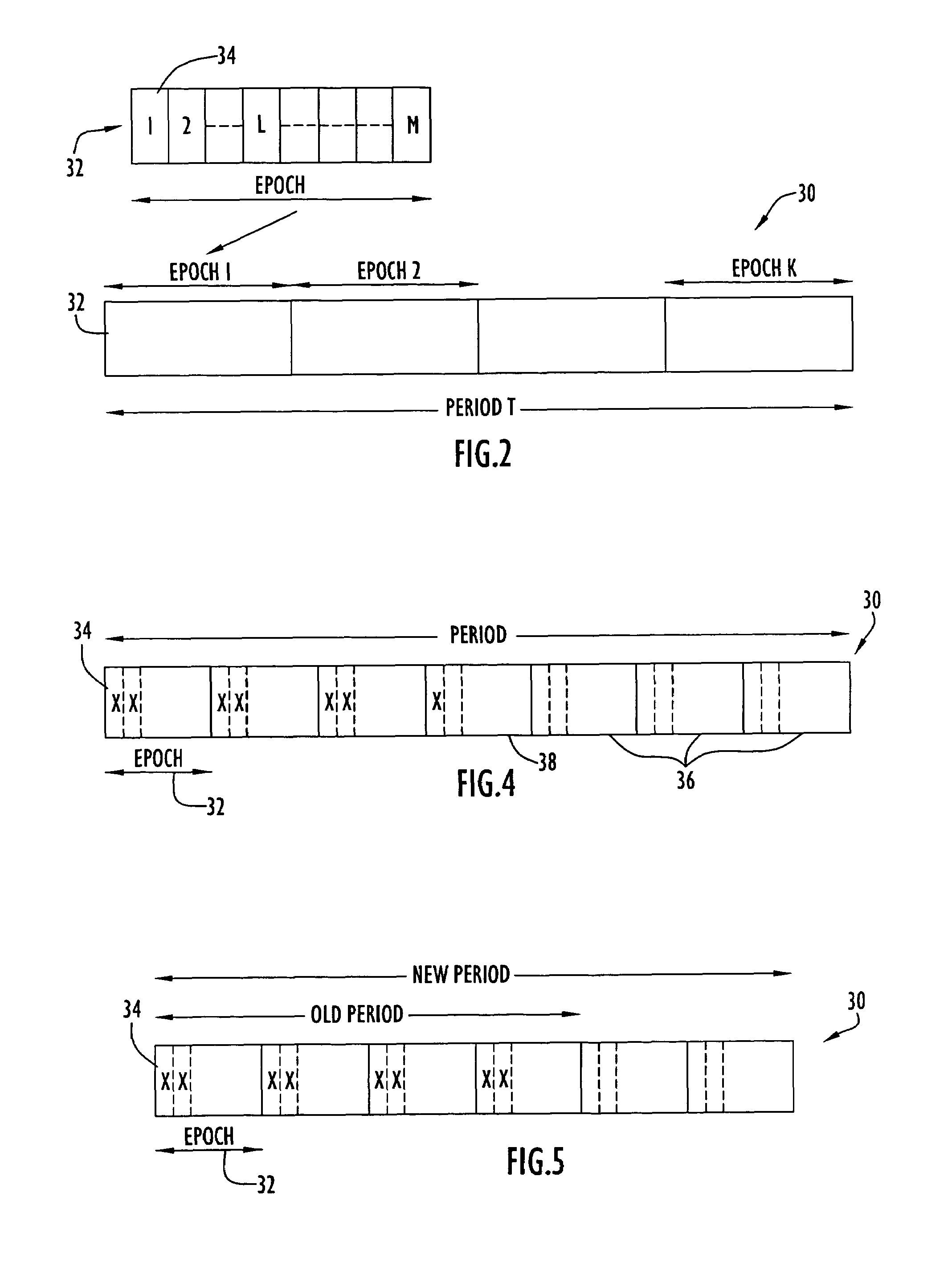Method and apparatus for dynamic neighbor discovery within wireless networks using time division multiple access (TDMA)
a wireless network and dynamic neighbor technology, applied in the field of wireless networks employing dynamic neighbor discovery protocols, can solve the problems of reducing reliability, collisions are unavoidable, and hello packets are lost, and achieve the effect of enhancing reliability
- Summary
- Abstract
- Description
- Claims
- Application Information
AI Technical Summary
Benefits of technology
Problems solved by technology
Method used
Image
Examples
Embodiment Construction
[0034]The present invention may be applied to various types of networks (e.g., missile, core based tree (CBT), cluster based networks, etc.) to discover neighboring nodes based on TDMA techniques. A controller network node performs TDMA time slot assignments for conducting neighbor discovery as described below. By way of example only, the present invention may be applied to a missile network including missile manager nodes (MMA), loitering attack missile units (LAM) (e.g., slow moving missile units with long flight time), precision attack missile units (PAM) (e.g., fast moving missile units with short flight time), container launch units (CLU) to launch missile units, unmanned aerial vehicle units (UAV) (e.g., dedicated relays for application support) and ground gateway units (GWY) to connect the missile network to a ground network. The network typically includes several missile managers, each controlling a quantity of missile units. The candidates for designation as a TDMA controll...
PUM
 Login to View More
Login to View More Abstract
Description
Claims
Application Information
 Login to View More
Login to View More - R&D
- Intellectual Property
- Life Sciences
- Materials
- Tech Scout
- Unparalleled Data Quality
- Higher Quality Content
- 60% Fewer Hallucinations
Browse by: Latest US Patents, China's latest patents, Technical Efficacy Thesaurus, Application Domain, Technology Topic, Popular Technical Reports.
© 2025 PatSnap. All rights reserved.Legal|Privacy policy|Modern Slavery Act Transparency Statement|Sitemap|About US| Contact US: help@patsnap.com



